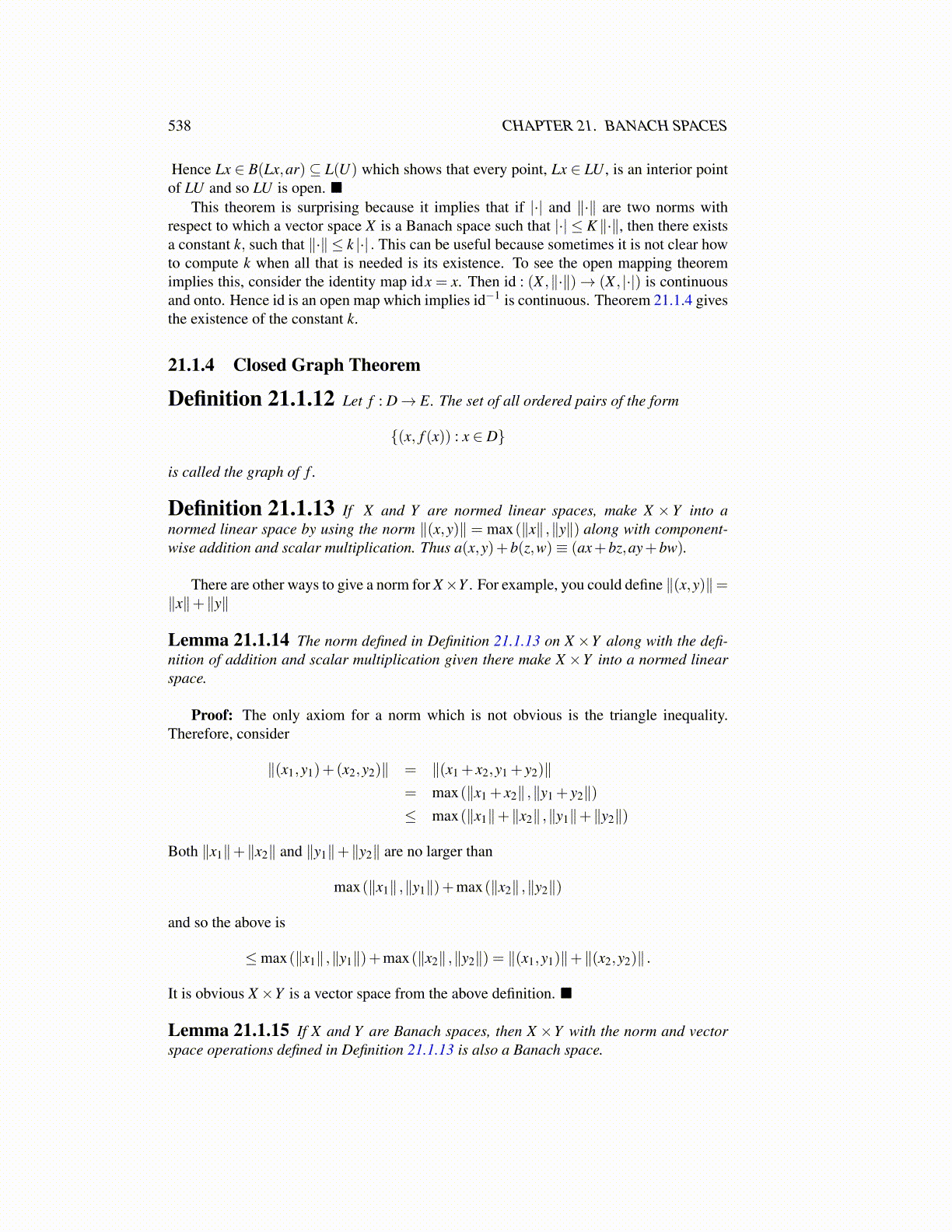
538 CHAPTER 21. BANACH SPACES
Hence Lx ∈ B(Lx,ar)⊆ L(U) which shows that every point, Lx ∈ LU , is an interior pointof LU and so LU is open. ■
This theorem is surprising because it implies that if |·| and ∥·∥ are two norms withrespect to which a vector space X is a Banach space such that |·| ≤ K ∥·∥, then there existsa constant k, such that ∥·∥ ≤ k |·| . This can be useful because sometimes it is not clear howto compute k when all that is needed is its existence. To see the open mapping theoremimplies this, consider the identity map idx = x. Then id : (X ,∥·∥)→ (X , |·|) is continuousand onto. Hence id is an open map which implies id−1 is continuous. Theorem 21.1.4 givesthe existence of the constant k.
21.1.4 Closed Graph Theorem
Definition 21.1.12 Let f : D→ E. The set of all ordered pairs of the form
{(x, f (x)) : x ∈ D}
is called the graph of f .
Definition 21.1.13 If X and Y are normed linear spaces, make X ×Y into anormed linear space by using the norm ∥(x,y)∥ = max(∥x∥ ,∥y∥) along with component-wise addition and scalar multiplication. Thus a(x,y)+b(z,w)≡ (ax+bz,ay+bw).
There are other ways to give a norm for X×Y . For example, you could define ∥(x,y)∥=∥x∥+∥y∥
Lemma 21.1.14 The norm defined in Definition 21.1.13 on X ×Y along with the defi-nition of addition and scalar multiplication given there make X ×Y into a normed linearspace.
Proof: The only axiom for a norm which is not obvious is the triangle inequality.Therefore, consider
∥(x1,y1)+(x2,y2)∥ = ∥(x1 + x2,y1 + y2)∥= max(∥x1 + x2∥ ,∥y1 + y2∥)≤ max(∥x1∥+∥x2∥ ,∥y1∥+∥y2∥)
Both ∥x1∥+∥x2∥ and ∥y1∥+∥y2∥ are no larger than
max(∥x1∥ ,∥y1∥)+max(∥x2∥ ,∥y2∥)
and so the above is
≤max(∥x1∥ ,∥y1∥)+max(∥x2∥ ,∥y2∥) = ∥(x1,y1)∥+∥(x2,y2)∥ .
It is obvious X×Y is a vector space from the above definition. ■
Lemma 21.1.15 If X and Y are Banach spaces, then X ×Y with the norm and vectorspace operations defined in Definition 21.1.13 is also a Banach space.